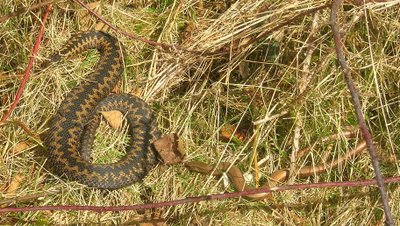
In the June edition of
British Wildlife, there is an interesting short feature on hibernacula for
viviparous lizards,
Zootoca vivipara, (aka
common lizard,
Lacerta vivipara) in the
Habitat management news section.
This refers to the excellent Conservation Evidence website and two on-line papers available there:
Aldus N., Parmenter J. & Showler D. (2005) Creating hibernacula for common lizards
Lacerta vivipara, The Ham, Suffolk, England.
ConservationEvidence.com, Case 180.
Creating a reptile hibernaculum, Newbury Bypass, Berkshire, England
Extracted from:
Stebbings R. (2000) Reptile hibernacula - providing a winter refuge.
Enact, English Nature (England), 8, 2, 4-7Both are available here:
conservation evidence.









